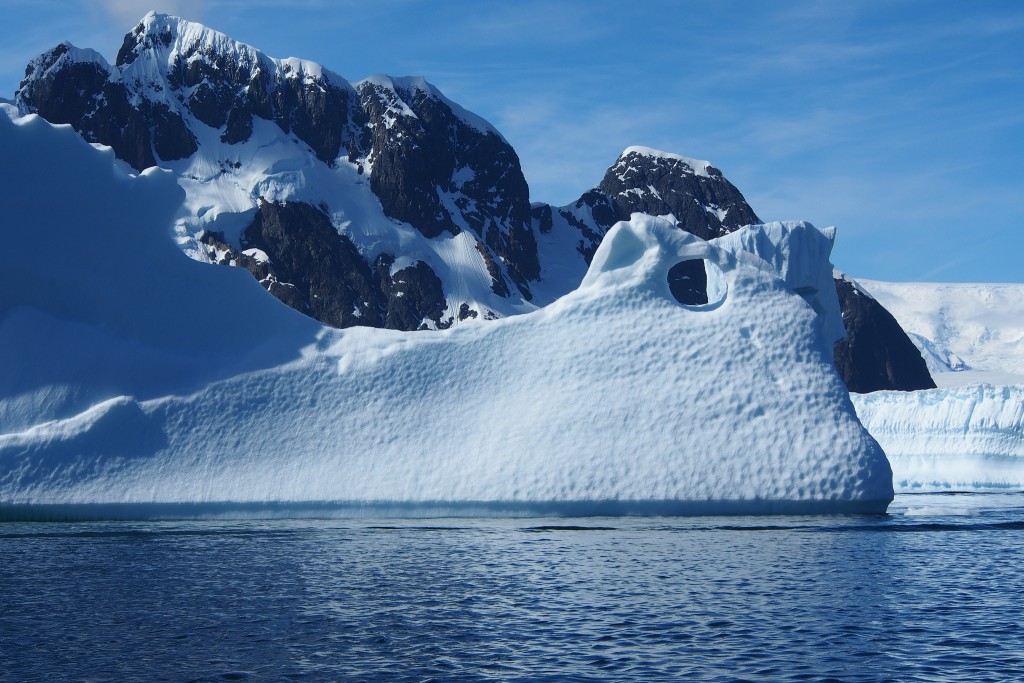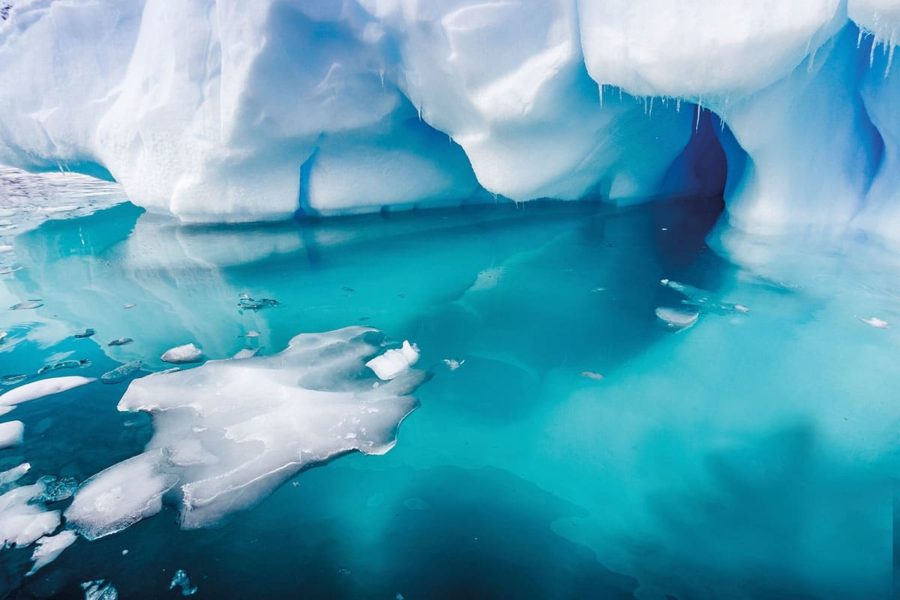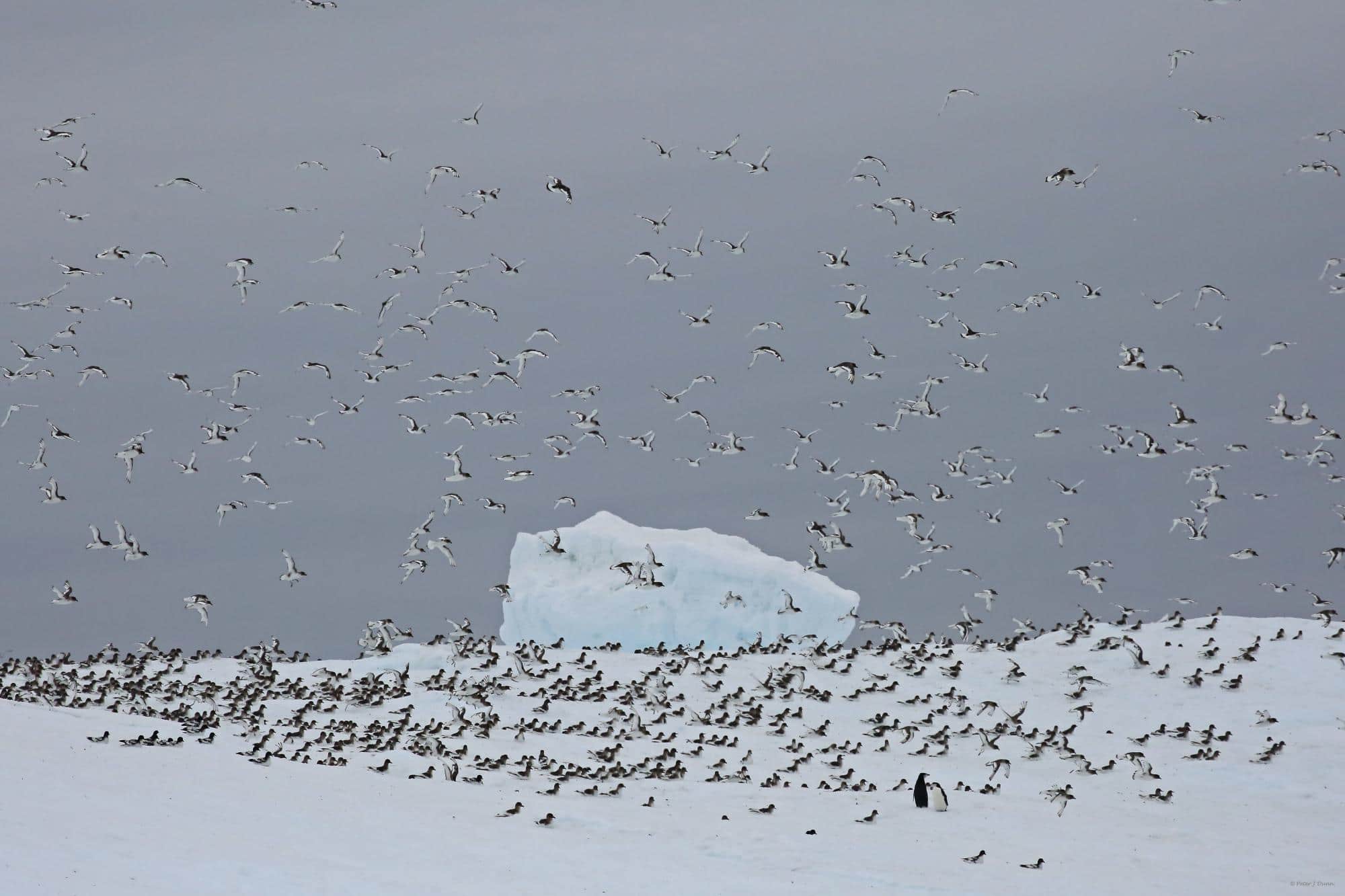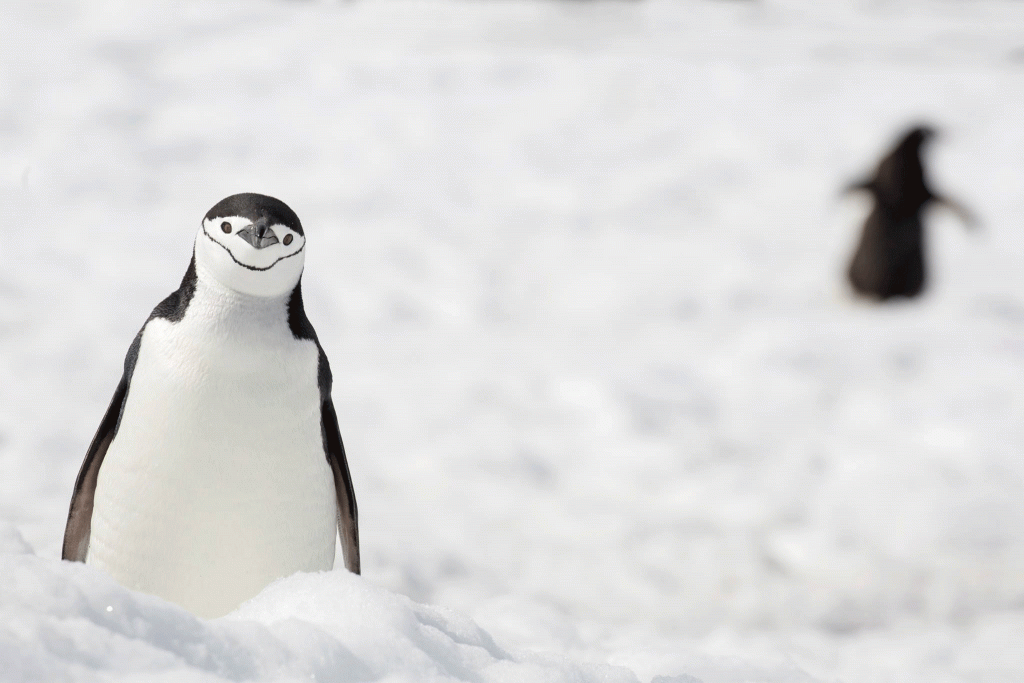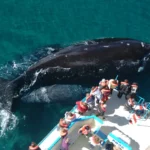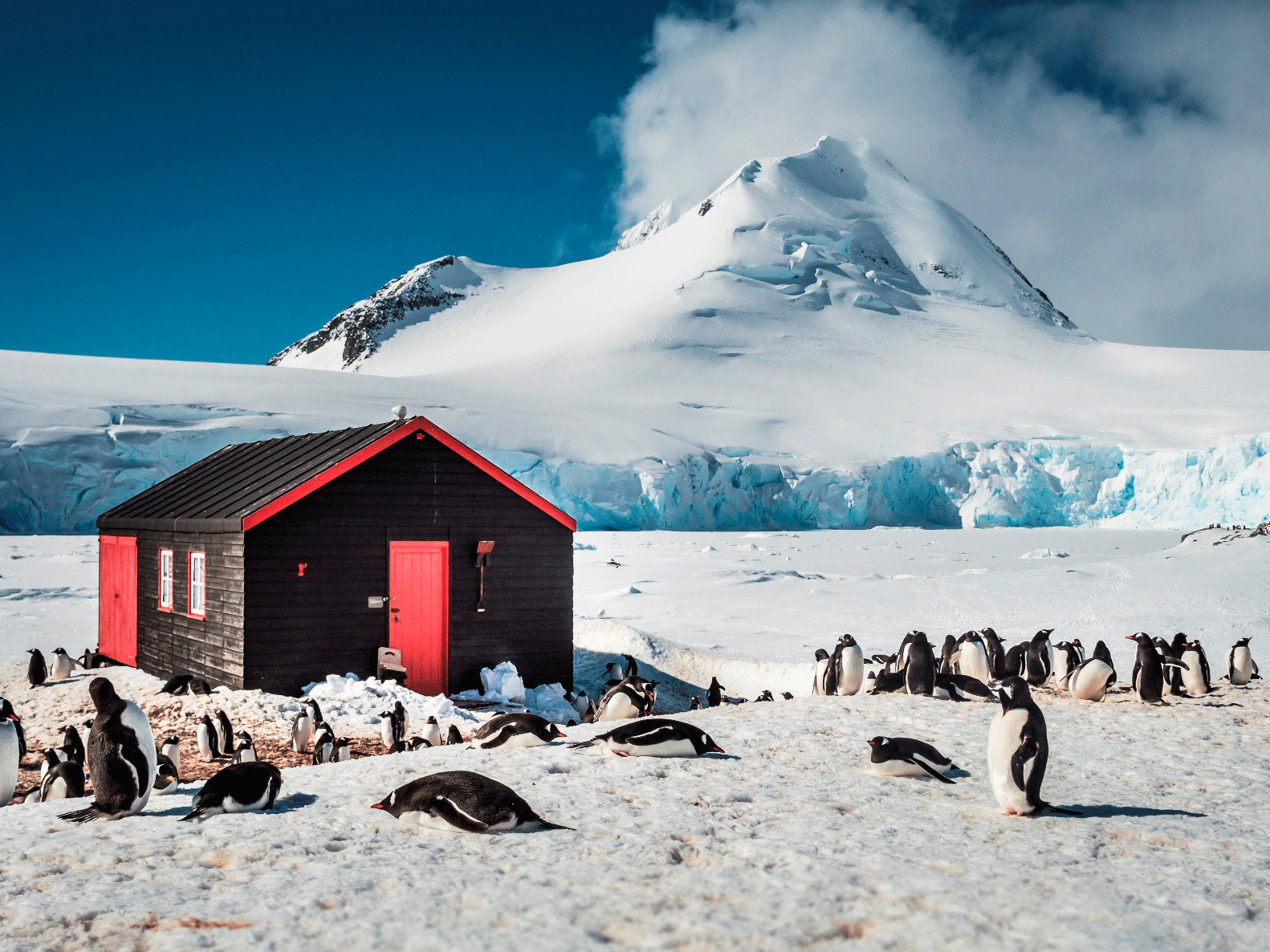
Animals in Antarctica
Going on a cruise to Antarctica is one of the most special trips we can dream of. The reasons are countless, but one of the biggest is how rare its landscapes and wildlife compare to other parts of the world. It goes without saying that Antarctica’s weather is savage. However, if you venture to the right locations, the real spots to discover its wildlife, you’ll encounter the stunning Antarctic animals.
Whether you are interested in birdwatching, wildlife watching or whale watching, the white continent has you covered. The animals in Antarctica are most active during the Austral summer (November to February) but, regardless of the month you choose to visit the southern land, this cruising adventure will not let you down.
What animals live in Antarctica?
Most of the animals in Antarctica live near (or in) the sea, and places such as the Antarctic Peninsula and the South Shetland Islands are ideal places to find them. We can find birds (including penguins), seals, and whales – among other species.
About the Environment
Antarctica’s weather conditions can be so harsh that it is just possible for a limited number of animals to develop there. And yet part of the joy of visiting the white continent is to appreciate the unique sea creatures it supports, its wonderful birds and even its mosses and algae. The species that are able to live in the region are known as extremophiles; they belong to a group of organisms whose features allow them to adapt to the extreme conditions they have to face.
Antarctic animals depend on the sea. Most of them are cold-blooded and large, as a result of their need to develop to adapt to the characteristics of the region, mainly to the relentless cold. These species have adapted to reduce heat loss, often developing warm coats and layers of blubber. Depending on the time of the year, you will also be able to see some of the seasonal visitors, which migrate there during summer. Antarctic wildlife range in size, from gigantic whales to small birds and worms. From birds to fish, you will be amazed by the species you will see in this southern paradise.
Non-walking Animals
Non-walking animals from the region are fascinating, primarily because of their size. Some of the Antarctic animals are considerably larger than their warmer-water relatives. This characteristic is thought to be related to the cold temperature of the water as well as to the low metabolic rates of these animals. This is the case of the elephant seal (Mirounga leonina), which can reach up to 4,000 kilograms (8,818 lb.) or, although less commonly seen, of the largest specimen: the blue whale (Balaenoptera musculus).
This “tiny” animal can grow up to 24 meters long (79 ft) and weigh 84 tones. When the feeding season in Antarctica is at its peak, an adult blue whale consumes from 3 to 4% of their body weight in krill per day. When the days are long and food is abundant, the feeding is almost nonstop. This means they feed for eight months of the year and then fast for the remaining four, when they live off their reserves of fat or blubber – built up during the days of plenty. So, get ready to stare open-mouthed at this huge mammal, which is -nothing less- the equivalent of about 25 fully grown African bull elephants.
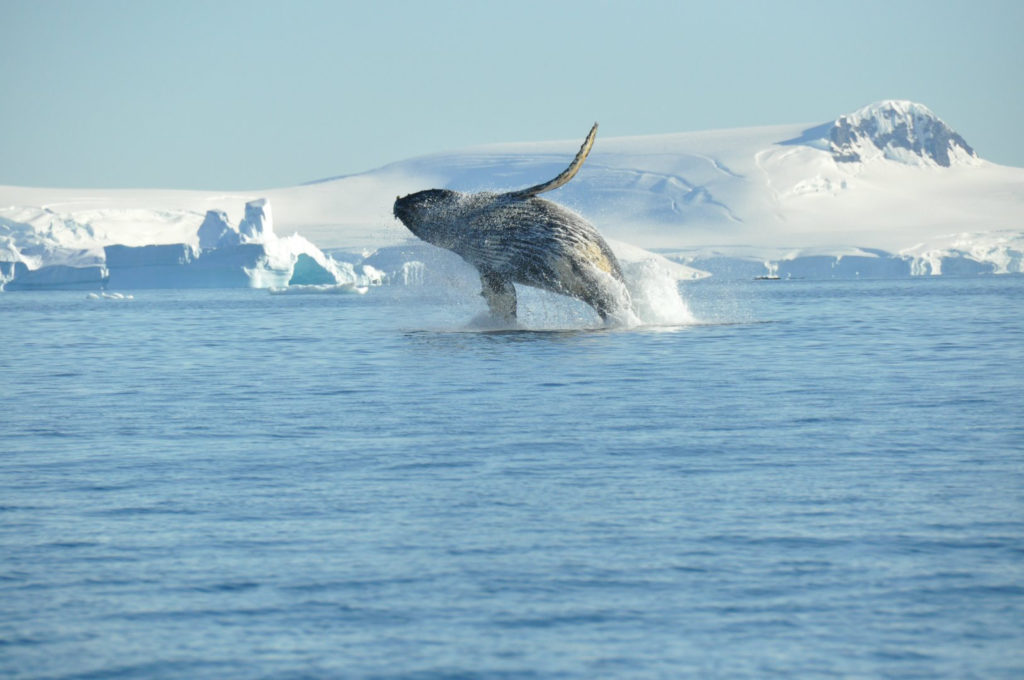 Humpback whales are among the most common – and also most entertaining – species. Watching them breaching and slapping their enormous flippers will make them be, undoubtedly, among your favorite Antarctic animals. Once in the channels, you will also get to see the stunning orcas hunting. Because warmer seas are more hospitable to krill, you’re also more likely to see Antarctica’s whale species in February.
Humpback whales are among the most common – and also most entertaining – species. Watching them breaching and slapping their enormous flippers will make them be, undoubtedly, among your favorite Antarctic animals. Once in the channels, you will also get to see the stunning orcas hunting. Because warmer seas are more hospitable to krill, you’re also more likely to see Antarctica’s whale species in February.
There are also other species of whales, such as the Minke whale (which belongs to the suborder of “baleen whales”) or the very well known Killer whales (Orcas). Orcas are the largest members of the Dolphin family, and probably the easiest cetacean to identify due to their unique appearance. They also inhabit in other Oceans of the world.
Going back to the Seals, apart from the Elephant ones you can find Leopard Seals, Weddel seals, and Crabeater seals.
Walking Animals
As for walking animals Antarctica has no natural fully terrestrial mammals, reptiles or amphibians. However, some species such as rats, sheep and various fish have been introduced with human activity. There is just a limited number of terrestrial vertebrates among the Antarctic animals and they can be found mainly in the sub-Antarctic islands.
Birdlife
Birdlife, however, is truly abundant in the area. Both mainland Antarctica and its offshore islands are home to over 100 million birds, which thrive in the strong sub-zero winds and icy waters of the polar region. One huge advantage that birds have is their feathers, which are able to quickly wick water from their bodies and dry after they have dived for food. Some species you will likely spot as you cruise through the Southern Ocean are albatrosses, skuas, gulls, terns and petrels, some of which nest there every spring.
Yet among all Antarctic animals, the star of the continent will forever remain the cute penguins, which can be seen in and around the region. Of the 18 penguin species, four live and breed on the continent and its close offshore islands. To learn more about the different types of Penguins in Antarctica, please click here.
Of all Antarctic animals, there is just one to breed during the winter: The Emperor Penguin. These flightless birds are endemic to Antarctica and are adapted to live their entire lives in these cold coasts thanks to the overlapping layers of feathers that keep them warm. While Emperors have a circumpolar distribution, they are typically only found near pack ice. They are the largest type of penguins – an average bird stands some 45 inches tall- and their yellowy-gold markings on the side of their head and neck make them truly beautiful (and photogenic!)
There may not be much diversity when compared to the rest of the world, but the Antarctic animals that do thrive in the white continent are some of the most fascinating species on the planet. So, if you still wonder what to expect from Antarctic wildlife, let’s be concise: get ready to be amazed and don’t forget to charge your phone to take the best photos!
Important: this article was written to provide a reference about which types of animals can be seen in Antarctica, but it doesn’t mean that you will see them. If you’d like to have more information, please contact us and let’s find the right itinerary for you.
What is Krill?
Krill is the name given to a small crustacean species that lives in Antarctica (Euphasia Superba). They eat mainly phytoplankton, and trillions of them are distributed across the South Atlantic waters. This is the main source of food for animals such as seals, whales, and penguins, therefore, their existence in healthy populations is very important.
Need help planning your trip?
We offer different ways of visiting Antarctica. As a kick-off, we invite you to take a look at some of our Antarctic Expeditions, such as the Classic Antarctica Cruise or the Flight to Antarctica & Cruise. Furthermore, we’ll be very happy to help you with other great destinations between Argentina and Chile!
Related tours:
0





